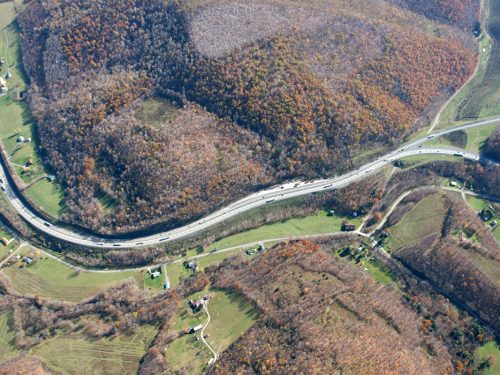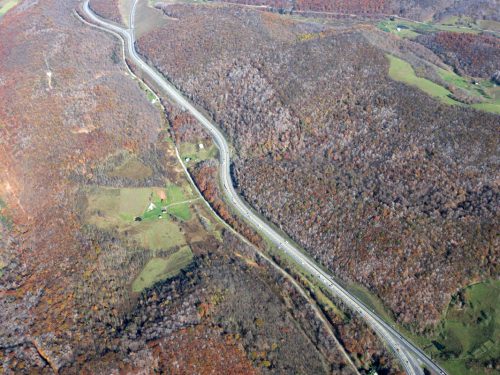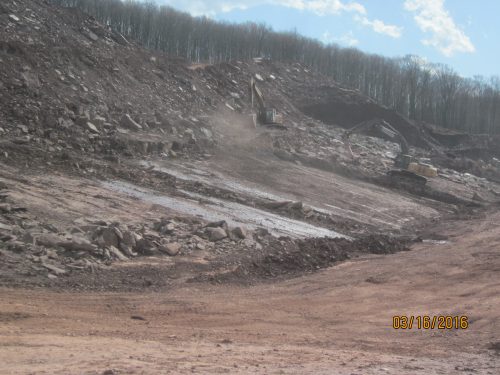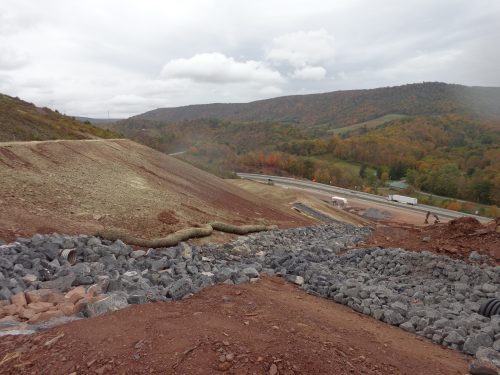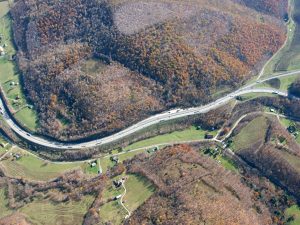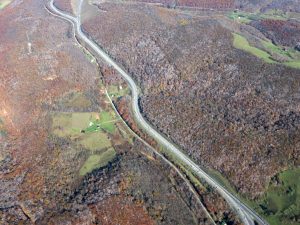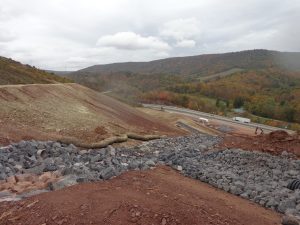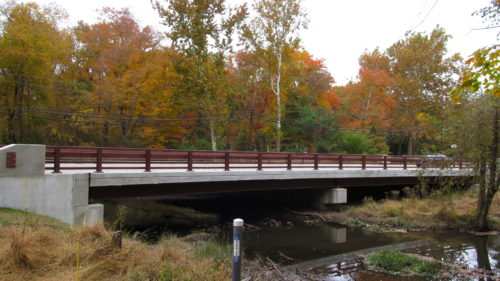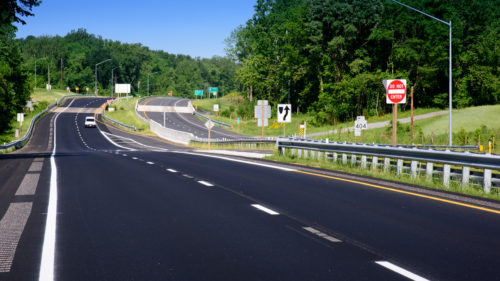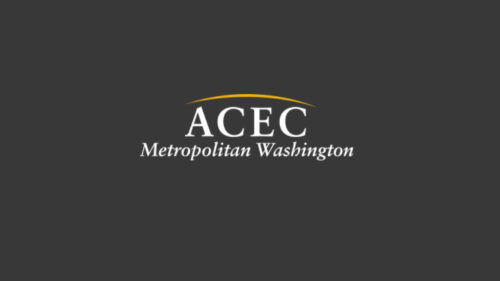Pennsylvania Turnpike Reconstruction
Pennsylvania Turnpike Reconstruction
As part of a large-scale project to reconstruct and widen the Pennsylvania Turnpike, JMT led a team to design a nine-mile section of the Turnpike that passes through the Borough of New Baltimore.
Construction of the Pennsylvania Turnpike in the 1940s caused a landslide – now referred to as the New Baltimore Slide – approximately 4.5 miles east of the Allegheny Tunnel, and it continues to affect local conditions.
The mass of rock and soil is 800 feet wide and extends 1,100 feet upslope from the roadway, and it has moved slowly ever since the original construction. The slide has been measured and monitored through the years to ensure the safety of the travelers along the Turnpike.
The scope of the project was to completely reconstruct the roadway, widen it to six lanes with a 26-foot median, eliminate most curves that exceed 3 degrees, address geotechnical issues at the slide by excavating below the failure plane, and replace all of the overhead bridges. In addition, all activities were performed while maintaining a minimum of two lanes of traffic in each direction.
The most challenging aspect of the design was determining how to address the New Baltimore Slide. The Pennsylvania Turnpike Commission (PTC) has monitored the movement and performed ongoing repairs of the roadway shoulder at the base of the slide as the mass moves and upheaves the pavement.
Early in the design phase, the team began a geotechnical exploration program to continue the monitoring work that preceded this project. Prior monitoring by the PTC included inclinometers, core borings, and conventional field surveys to develop structure contours of the failure plane, delineate the boundary of the slide, determine the rate of movements, and understand the trend of movements in relation to rainfall events. The goal of the program was to understand how this mass moved in order to develop plans and specifications to allow for the safe and efficient removal of the slide.
The estimated overall cost of this project exceeded $250 million and was constructed through several separate contracts.
